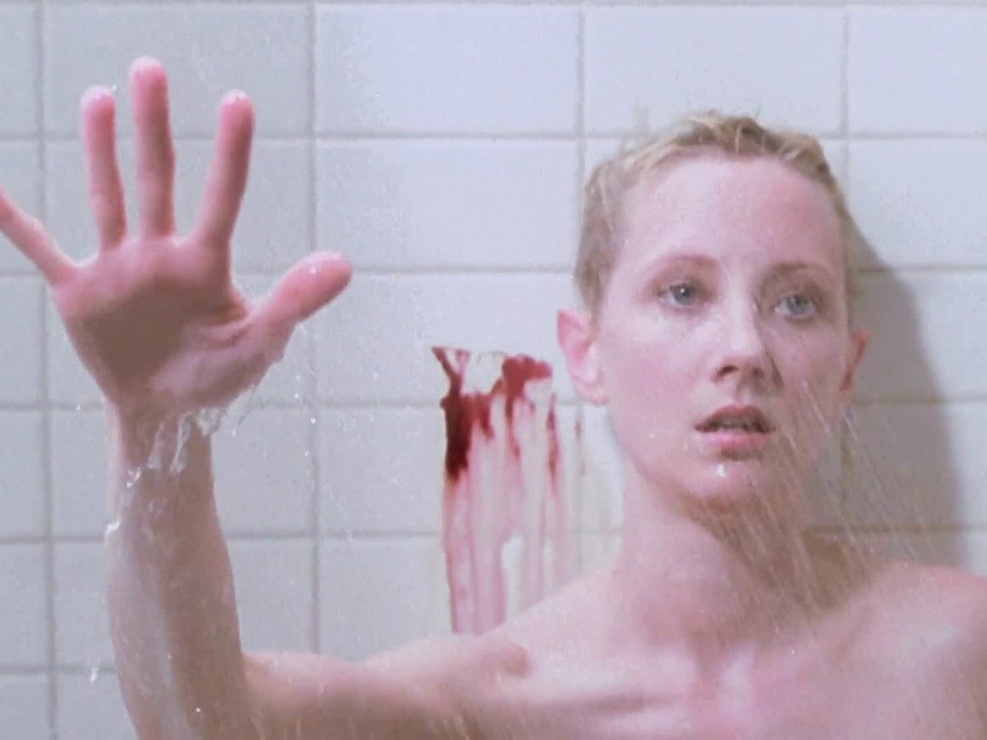
A Phoenix secretary embezzles $40,000 from her employer's client, goes on the run and checks into a remote motel run by a young man under the domination of his mother. This film is a shot-for-shot remake of Psycho (1960) by Alfred Hitchcock.
EN
“When he first came to Los Angeles in 1975, Gus Van Sant was too intimidated to call Alfred Hitchcock and ask for work as an assistant. In 1998, some 18 years after Hitchcock's death, Gus called the director's daugther, Patricia, with a more brazen request: her blessing to remake her father's masterwork, one in which she played the small role of Caroline, co-worker of the protagonist Marion Crane. "Are we actually going to do this?" Patricia, who had witnessed the original production from within the beast's belly, told Gus her father would have appreciated the gesture. She approved. Joseph Stefano, Psycho's original screenwriter, also agreed to oversee the remake's script. He was bewildered by how little was required of him, however, since Gus wanted to leave the text effectively untouched, save for a few inflation adjustments and phrases tweaked to account for 38 years of linguistic evolution. Gus' other collaborators, such as the composer Danny Eflman – who supported the idea and wanted it to succeed – warned Gus that he was committing directorial suicide. After Universal's unexpected backing for the Psycho remake, Gus himself wasn't sure he should go through with it. As Gus recalls: "The first day of shooting, [the cinematographer] Chris [Doyle] asked me, 'So, are we actually going to do this shot for shot?'" The question took Gus by surprise. "Let's think about it for a second," he told Doyle, stalling for time. "We don't have to. We can do whatever we want, the studio doesn't really care..." After a moment's hesitation in the trenches, Gus led his team toward no-man's land refusing to look back. "We had to copy it shot for shot to see what it would look like," he explains. "That's what we wanted to know. Otherwise, we would be subverting our own concept."”
Katya Tylevich1
“Devoted as he was to a Psycho forgery, as Gus says ironically, he nevertheless made several subjective, intuition-driven artistic decisions in order to create the film. Foremost among his choices was the cast, selected largely by feel, including Anne Heche and Vince Vaughn as modern-day counterparts to Janet Leigh and Anthony Perkins. In particular, Gus felt Vaughn's typecast as a childlike but sinister all-American jock made for a frightening adaptation of Bates. Gus also took advantage of technological advances to shoot what he thought Hitchcock would have in 1960, had he had the equipment. This includes a stealthier opening shot across the skyline of Phoenix, Arizona, which, in Gus's version, transitions fluidly into a peep through an apartment window, where one finds Marion Crane amid erotic aftermath. Gus also replaced instances of the 1960s innuendo with blunt 1990s nudity. The most drastic choice, however, was shooting the remake in color, with the idiosyncratic cinematographer Christopher Doyle. Doyle, known for his distinctive style and collaborations with the filmmaker Wong Kar-wai, was – objectively – an odd choice for a project valuing replication over originality. But because the two men had first established a friendship, and Doyle was always "pretty much up for anything new," says Gus, they worked together easily.”
Katya Tylevich2
“When he arrived in Los Angeles to start work on Psycho, Mr. Van Sant challenged the free-wheeling Mr. Doyle to comply with some strict guidelines. The director insisted that his remake of Alfred Hitchcock's classic follow the shot selection drawn up by Hitchcock nearly 40 years ago. ''We could have deviated from the original,'' Mr. Van Sant said, ''but as time went on, we became more and more interested in the original setups.'' Mr. Doyle recalled: ''It was an exercise in style. We were going to remake it shot for shot, but how do we make it our own?'' Their first departure from Hitchcock was to use color rather than black and white. ''His black became our green,'' said Mr. Doyle. To capture the television quality of Hitchcock's film – the 1960 Psycho was filmed by a television crew – Mr. Doyle suggested de-saturating the film during processing to give it a nostalgic look. ''This would make our film look good but still be deferential to the original,'' he said. In the film [...] Mr. Doyle opted for different lenses and hand-held shots, which gave the actors, especially Anne Heche, who reprises the role played by Janet Leigh, greater freedom.”
David Hay3
- 1Katya Tylevich, "Rethinking the remake. Psycho: Tampering with artistic license," in Gus Van Sant: The Art of Making Movies (London: Laurence King Publishing, 2021), 118-131.
- 2Katya Tylevich, "Rethinking the remake. Psycho: Tampering with artistic license," in Gus Van Sant: The Art of Making Movies (London: Laurence King Publishing, 2021), 118-131.
- 3David Hay, "FILM; An Imagist With a Camera in Hand," nytimes.com, 8 November 1998.

